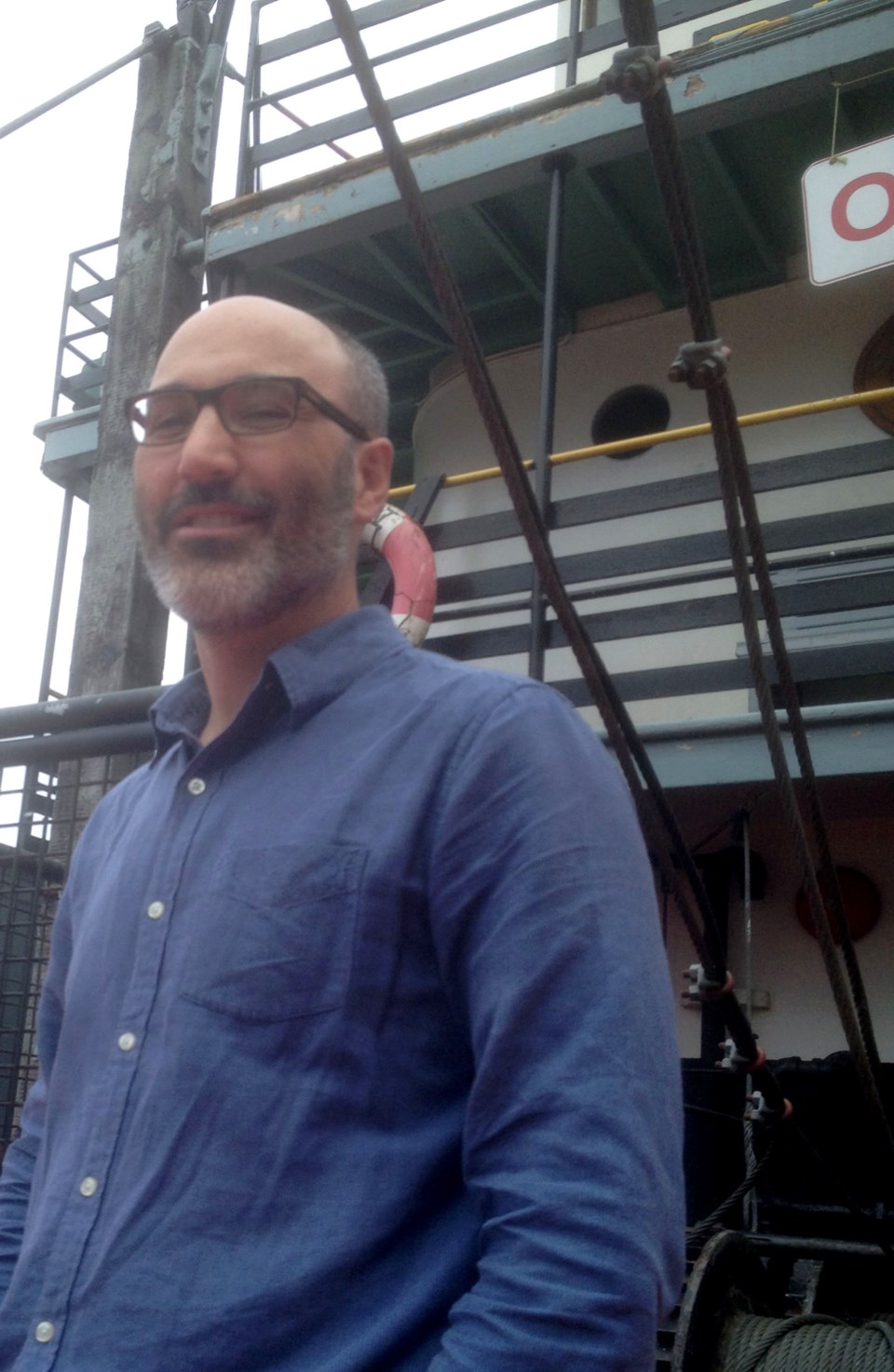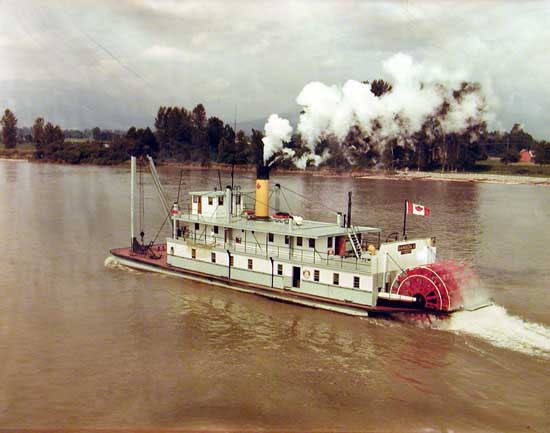Mark MacKenzie has had his heart broken many times the last few decades. But, last month, it was mended somewhat by Parks Canada.
For much of his adult life, MacKenzie, 53, has worked with historic sternwheeler boats. He’s fought for their preservation for decades, including New Westminster’s Samson V.
He sought to have it designated as a national historic site because of the paddlewheeler’s importance to the city’s waterfront and to industry up and down the Fraser River. That was a no go for the feds. They had already been there, done with a trio of regular paddlewheelers – the S.S. Klondike in Whitehorse, the S.S. Keno in Dawson City, Yukon, and the S.S. Moyie in Kaslo, B.C., which MacKenzie worked on during two stints.
Getting recognition for old boats has been a struggle. But MacKenzie was persistent, even though he has since moved on to operating vessels that actually move as a captain with Paddlewheeler Riverboat Tours. He did another application, this time asking for a broader designation as a historical event because of the importance snagboats like the Samson V were to industry on British Columbia rivers.
“That’s the one they bought,” said MacKenzie of the unveiling of a plaque in late June acknowledging the historic work of the vessels. “I was just really pleased. Working on heritage ships has been breaking my heart for a long time.”
The Samson V is the fifth in a line of wooden, steam-powered snagboats operated by the federal department of public works. The Samson I was built in 1883 at the W.G. Bowen Shipyard in Victoria. The V was launched in 1937, the same year the Pattullo Bridge opened, and worked the river until it was retired in 1980. That’s when the city bought it for a buck to preserve it as a museum.
In Canada, snagboats were unique to British Columbia. They were mostly confined to working the Fraser and North Coast fishing rivers.
The vessels were especially suited for shallow, fast-moving waterways like the Fraser. Their job was to remove anything that could wreak havoc on fishing nets, log drives or the passenger and freight sternwheelers that operated from the days of the Cariboo gold rush to the 1920s.
Every year they’d haul a thousand or so tree trunks, boulders and other obstructions out of the river. They could also pile drive, and break up log and ice jams.
They were right for the job because they were flat-bottomed and could skim lightly over the water and scoot up on sandbars, yet still haul objects weighing up to 50 tons with their cranes and pulleys. In their era, they were the heavy rescue tow trucks of the river.
 Rob McCullough of the New Westminster Museum and Archives has come to learn how important snagboats were to life on the Fraser River from the late 1880s to 1980. - Grant Granger
Rob McCullough of the New Westminster Museum and Archives has come to learn how important snagboats were to life on the Fraser River from the late 1880s to 1980. - Grant Granger“The engines and the winches on the front of this vessel could pick up some of the largest logs that you could imagine, and just lift them up on the bank. They could pick cars out of the water and swing them onto the bank,” said Rob McCullough, New Westminster’s manager of museum and heritage services.
Former Samson V captain Albert Gibson told MacKenzie about extracting a huge cottonwood from a channel beside Barnston Island. The tree was so waterlogged that when the Samson tugged, its backend lifted out of the water. The crew had to cut the tree into pieces with a chainsaw and take them to shore individually.
In the early 1930s, an old sailing ship anchor was pulled from the river. No one else wanted it, so the Samson adopted it for its own use. It was passed from the Samson IV to the Samson V, where it still sits on deck.
The Samson V weighs 418 gross tons and has 115 feet of deck. The vessel could accommodate up to 14 crew including a cook, who sometimes would bake pies in the morning and trade them to Natives for fresh salmon that he’d serve for dinner, said MacKenzie.
In all, there were eight snagboats, including the five Samsons, patrolling B.C. waters. Samson I, McCullough said, was repurposed in Prince Rupert where it was known as the Goliath of the North.
“(Samson and Goliath) are good names because that’s what they really represented was strength. Sometimes brute force and ignorance is what works when you’ve got to clear ways for things to get through,” said McCullough.
The Samson V is now a floating museum moored just west of the River Market. It’s basically the same spot where the Samsons resided during their working days.
“The history of this vessel is intimately intertwined with the overall narrative of our waterfront,” said McCullough as he stood in the vessel’s officer mess next to the kitchen.
By teaching others about the significance of the vessel McCullough began to realize “it’s a pretty special ship.”
“This ship was one of many factors contributing to a lively, industrious waterfront in New Westminster,” said McCullough. “It’s kind of pivotal to the identity of our city, and the fact we’re currently undergoing a rejuvenation of our riverfront. It’s got a slightly new identity, different types of industry, different types of work are coming through here. But we’re also trying to hold onto what made our city and this place what it is today. This is kind of a cornerstone of that identity.”



